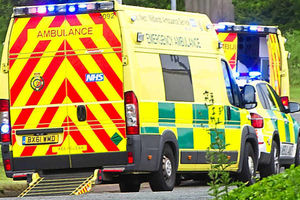Number of suicide deaths in Staffordshire up by nine per cent
The number of suicides has risen in Staffordshire at almost the same rate as they have fallen in the rest of the UK, it has emerged.

Suicides accounted for more deaths in Staffordshire between 2011 and 2013 than breast cancer and strokes, making it the fourth highest killer in the county.
During that time the rate of suicides nationally fell by 10 per cent – but in Staffordshire they increased by nine per cent.
Council bosses, who are drawing up plans to address the problem, believe the reason has more to do with the national economic picture and associated financial pressures rather than anything specific to living in Staffordshire.
A Samaritans spokesman said Staffordshire's large rural population, including a high percentage of farmers, made it prone to suicide.
A breakdown of districts shows Stafford as the biggest suicide hotspot, followed by Newcastle-under-Lyme, with Cannock Chase in third place, Lichfield in fourth and South Staffordshire in sixth spot.
Following the economic crash in 2008 the number of people taking their own lives in Staffordshire almost doubled over the following two years. Since then, with the exception of 2010, the number of those taking their own lives in the county has been around 80 each year.
Alan Alecock, spokesman for the Stafford branch of the Samaritans, said: "Staffordshire is very much a rural county and it is a well-known fact that there is a higher risk of suicides here than in urban areas. The vagaries of farming and the isolation that can be felt by those living in rural communities are the main causes.
"There used to be rural outreach groups that worked in these areas but funding has disappeared.
"We work with the National Farmers' Union but people in these situations are often loathe to seek support because they feel their dad and their grandad managed before them, so they should be able to.
"The problem is that it's hard to help people if they do not approach us."
The county council's safe and strong communities select committee has been asked to scrutinise a five-year suicide prevention strategy drawn up with the help of relevant agencies.
Councillor Alan White, cabinet member for health and wellbeing, said: "The reasons for suicide can be complex and national economic conditions, such as a recession, can lead to money, housing and relationship worries for example.
"However, unfortunately, many people who choose to commit suicide are not known by any service, so as part of this joint strategy with partners in Stoke-on-Trent, we are focusing very much on reaching the most high risk groups, but also on making everyone more aware of the signs which may show that someone they know may be contemplating suicide."





